This article is part of the Adapting Board Games for Neurodivergent and Disabled Kids series. Find the main page for this series here.
Adapting games is time-consuming and sometimes even costly.
Designers and manufacturers must consider accessibility from the planning phase for every game they create.
Until then, I hope this series helps you think about the games you can already access.
Note: Get the FREE downloadable planner at the end of this post.
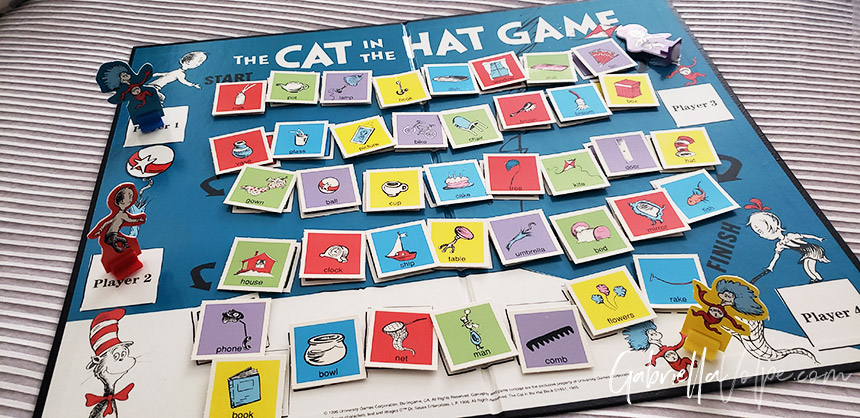
I have gathered the ideas shared from the individual posts in one spot and created an Adapting Board Games Planner (FREE!) for you!
Note: The list below is part of the planner, so you can keep it handy for quick reference. Use the suggestions for more than one game style. Get creative!
Game Adaptations/Modifications
-
- Change the rules
- Change the playing surface (e.g., tabletop, floor, wall, against furniture, etc.)
- Photocopy, enlarge, and laminate game parts that will get reused often
- Recreate the board (e.g., photocopy, enlarge, and laminate smaller boards, use Hoola hoops or painter’s tape)
- Use anchors to stabilize pieces like loops and hooks, and rubber mats
- Break up the game into smaller tasks
- Reduce the number of playing cards
- Interchange dice for a spinner and vice versa
- Use jumbo versions of playing parts (e.g., jumbo dice)
- Find junior versions of the same game
- Prop up game cards in unconventional ways (e.g., containers, tech holders, or slotted pool noodles)
- Use game parts beyond the established game rules (e.g., sort, name, or identify by letter sounds, color, object category, etc.)
Always include the child’s communication method in play. Is it spoken word? Gestures? Vocalizations? ASL? AAC? Other? Playing board games provides endless opportunities for communicating. Be sure to maximize play and communication!
Adapting Board Games Planner - Free!
Use this planner to help you organize board games and plan for adaptations and modifications.
Sign up to have the FREE Adapting Board Games Planner delivered straight to your inbox!
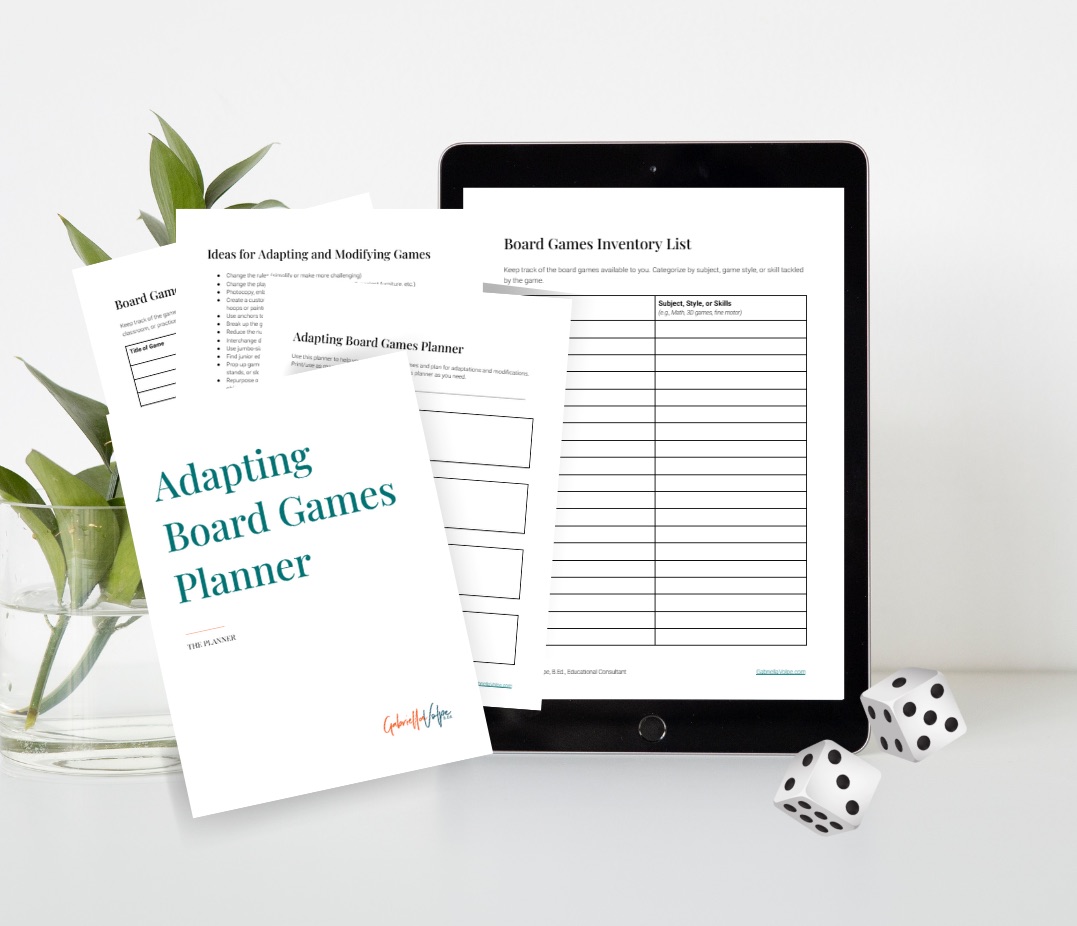
By signing up, I’ll also add you to my mailing list. You can unsubscribe at any time.
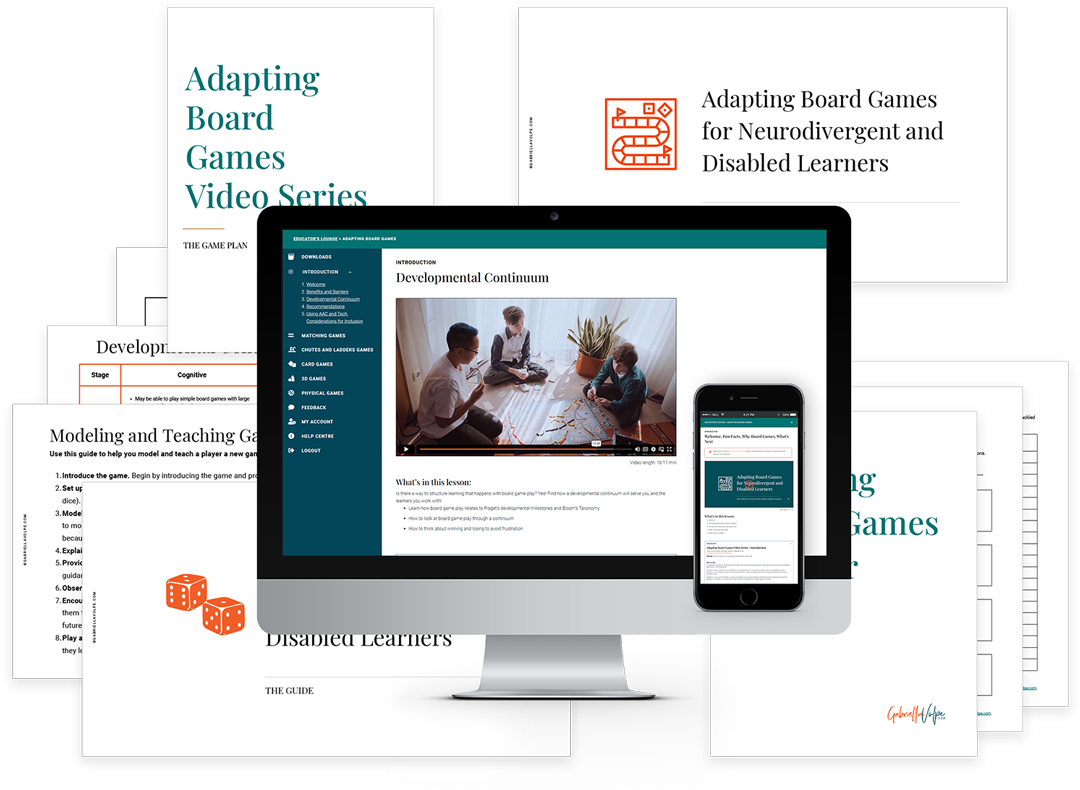
Adapting Board Games Video Series
Learn how to create inclusive play experiences for neurodivergent or disabled learners.

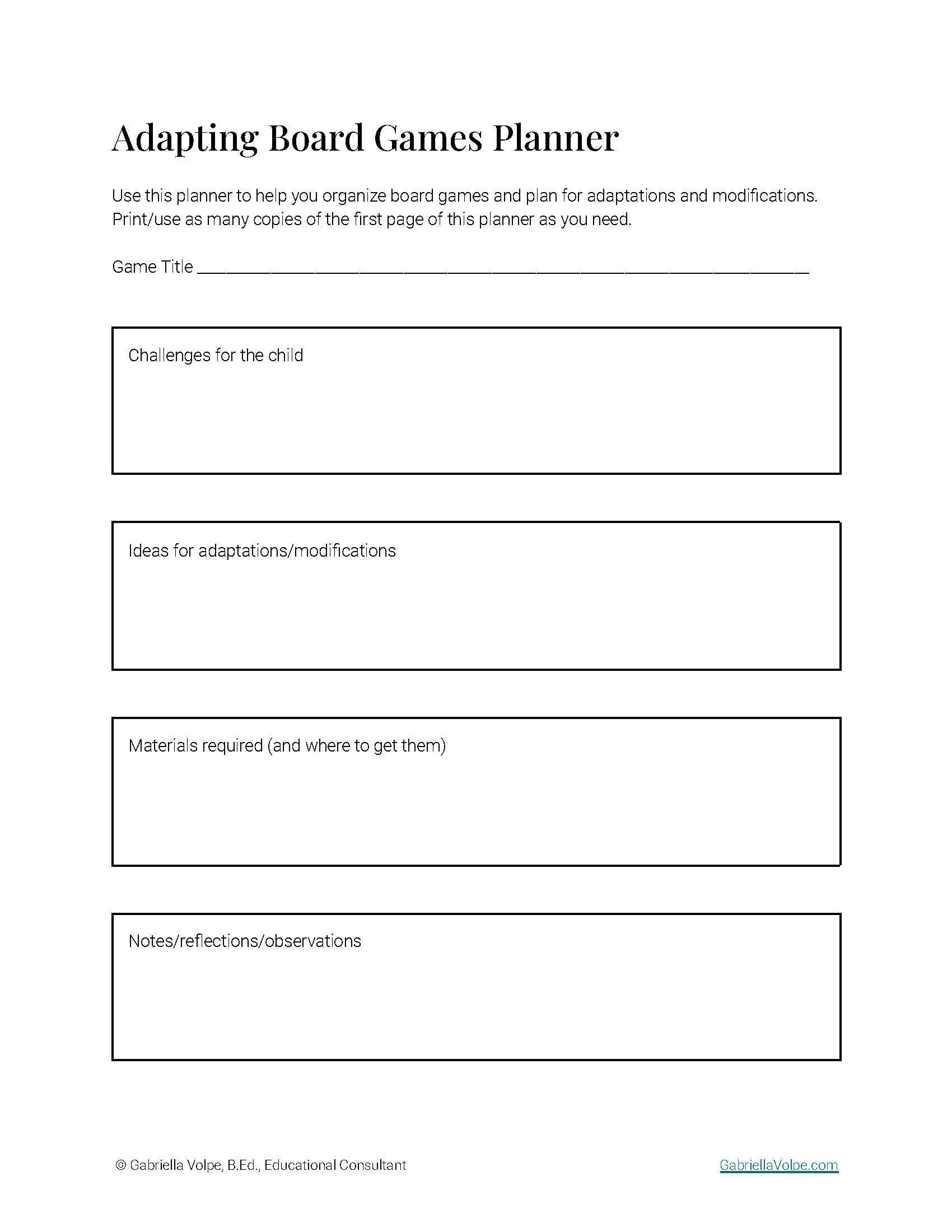
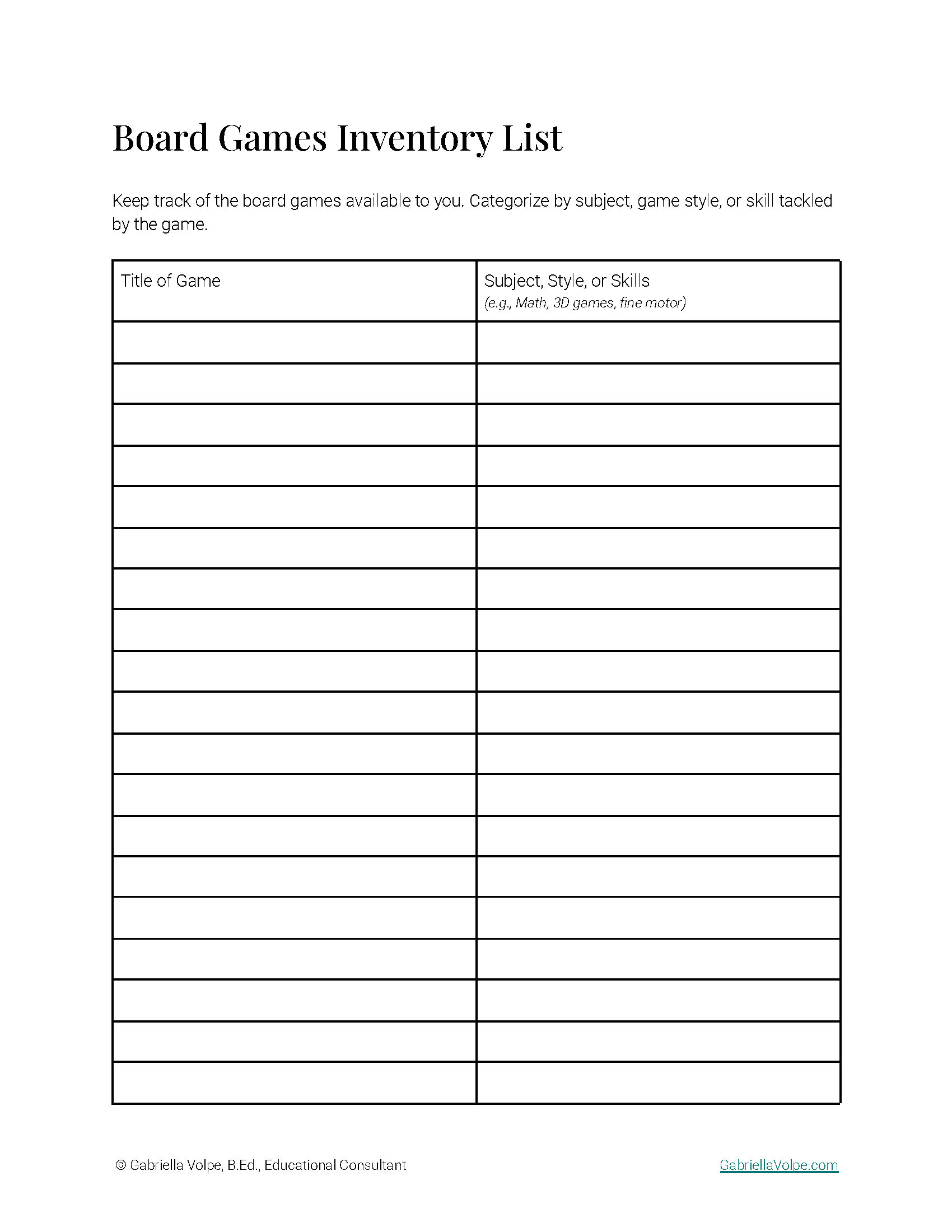
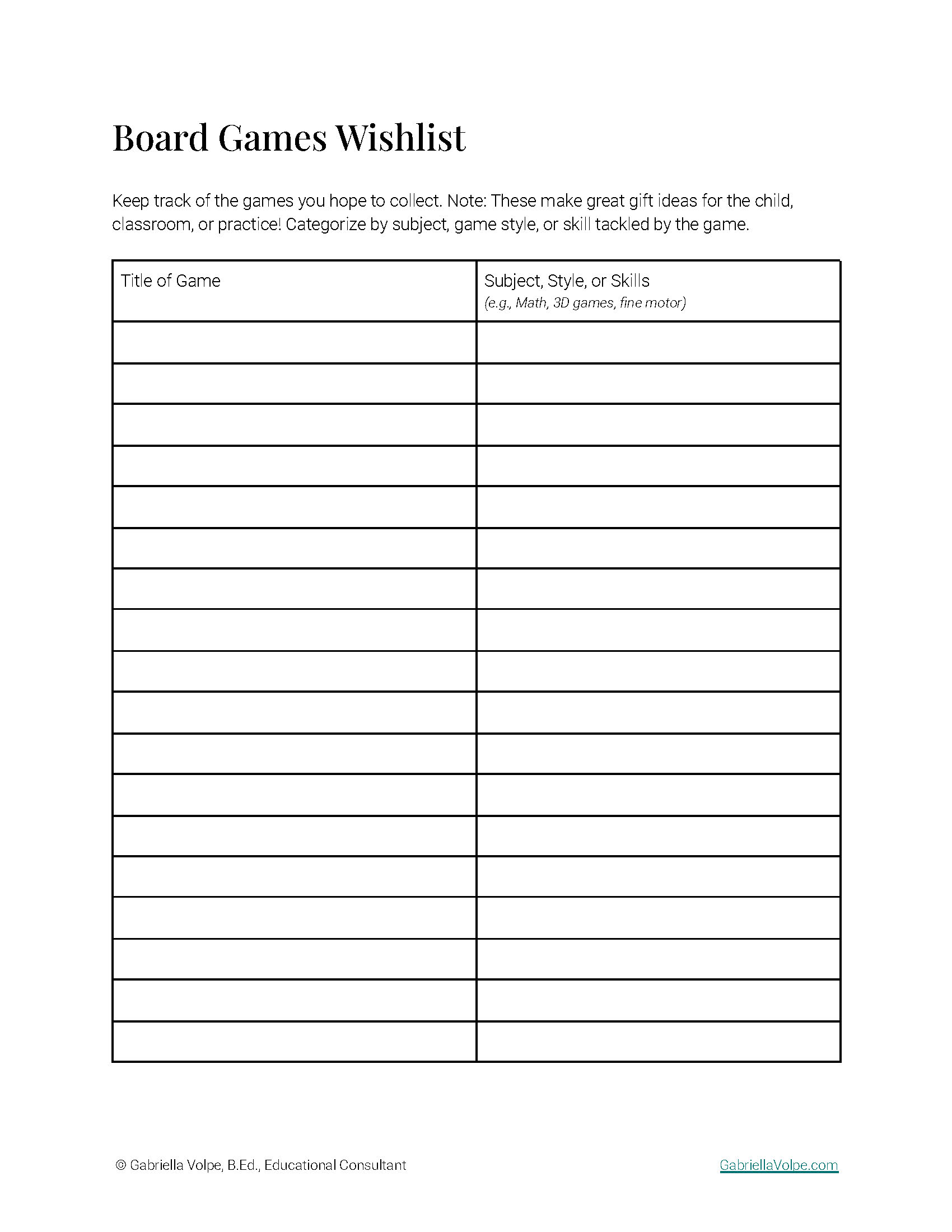
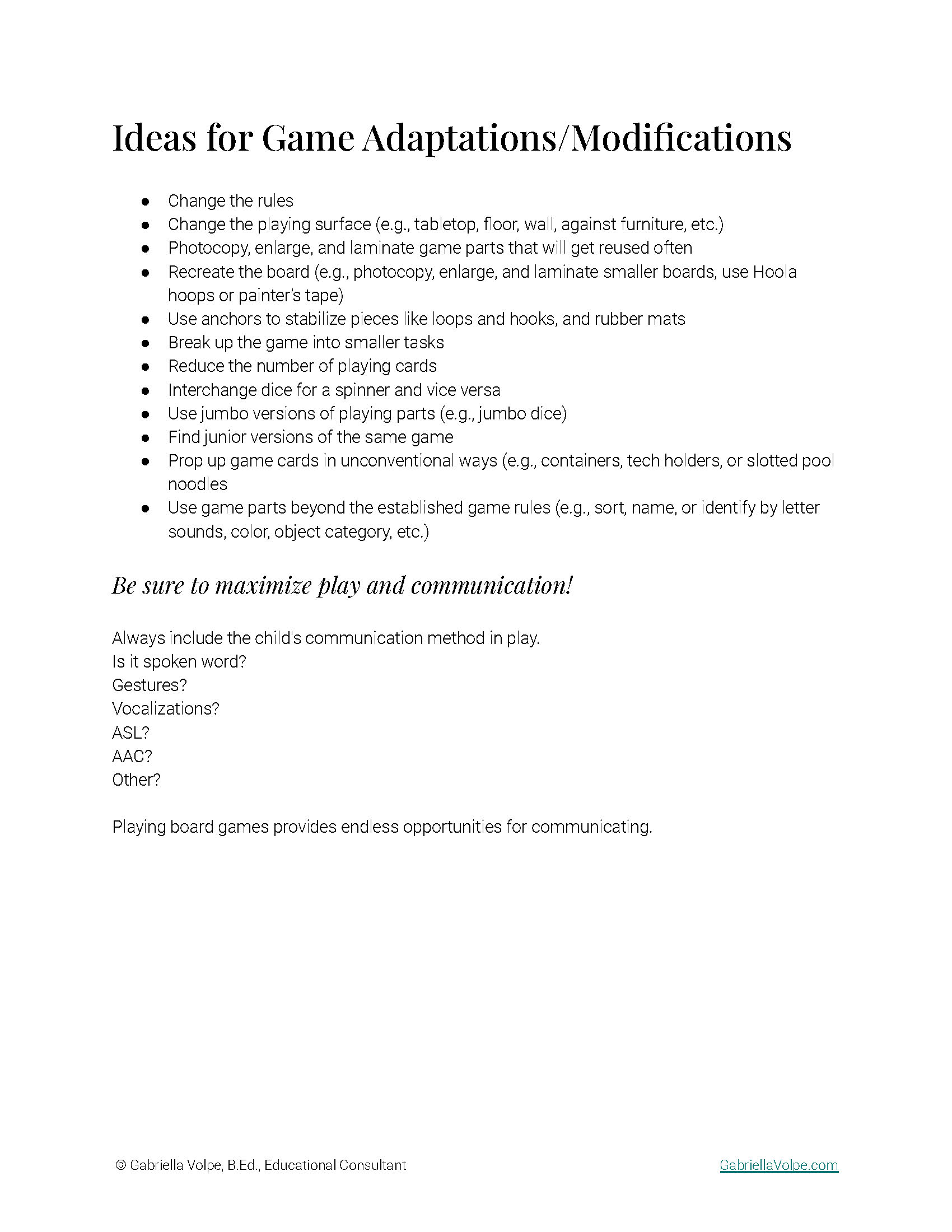
0 Comments